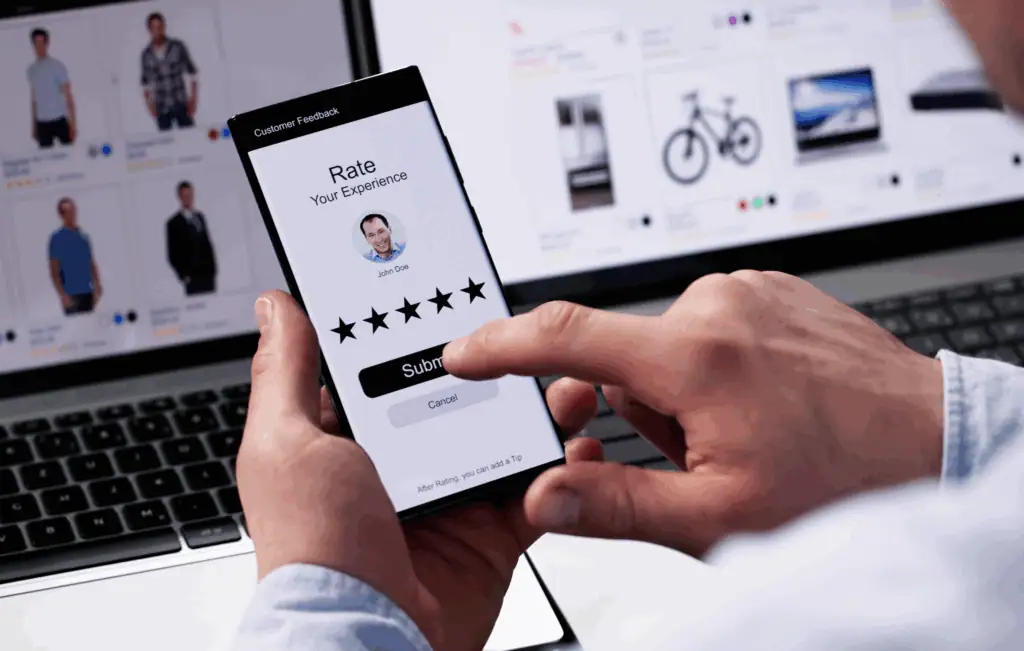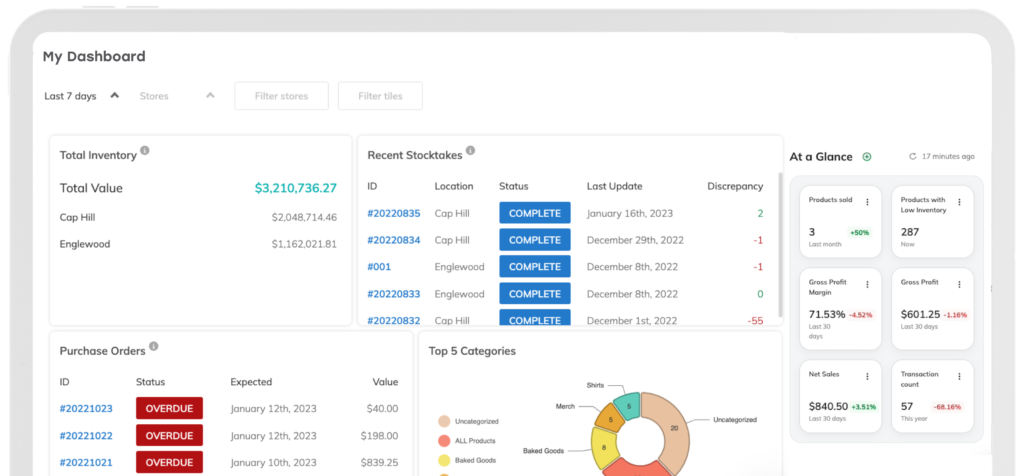
8 Emails Every Small Business Needs For Growing Customer Relationships
When there are so many exciting things happening with your brand, how do you alert customers if they’re not in your store? Email lets you reach customers directly, from communications about upcoming sales to asking for valuable feedback about how to improve the shopper experience.
Comprehensive email marketing efforts help you grow your business at every stage. No matter what industry you’re in, there are email campaigns that every small business needs to prioritize. Get the most out of every campaign with our expert tips.
What You’ll Gain With A Strong Small Business Email Marketing Strategy
Enjoy a high return on investment
Email is one of the most cost-effective marketing channels for growing your business. For every $1 spent on email marketing, small businesses get back an average of $36 in return. Compared to social media, where marketers expect to earn $5 for every dollar spent on paid campaigns, it’s clear that email is the more economical marketing channel.
Get useful data and actionable insights
One of the best ways to get the most value for your dollar is to track how well your emails perform. Businesses that measure key metrics get maximum return on investment (ROI) because they have the data to see what’s working and where they need to improve. The good news is that most email marketing software makes it easy to measure these metrics. If you’re just getting started, these are the top metrics to pay attention to:
- Open rates: See how many subscribers opened your message.
- Click-through rates: Track the amount of readers clicking on the links in your emails.
- Unsubscribe rates: Reviewing the number of customers opting out of your messages reveals where your emails are missing the mark on engagement.
- Bounce rates: Learn which email addresses are no longer active and need to be removed from your contact list.
- Conversion rates: Measure which emails are leading customers to take action.

Cultivate loyal customer relationships
As a line of direct communication with your shoppers, email allows you to reach your audience in just about every stage of the customer journey. From interested shoppers who’ve just started browsing to longtime patrons, email campaigns offer numerous opportunities to meet customers where they’re at. For instance, if it’s been a while since a longtime customer has made a purchase, a well-timed discount code goes a long way in bringing them back to checkout.
Improve brand awareness
A good email marketing strategy helps you build a strong brand. Consistent, well-timed emails keep your company top of mind. If customers hear frequently from your kitchen supply store, the more likely they’ll think of you first when it’s time to buy that new cast iron skillet.
Increase sales and engagement
If you want your customers to take action, email is the place to ask. When you show up in their inbox, you’re reaching your audience at a time they’re more likely to actively engage, unlike when they’re passively scrolling social media.
Design your emails effectively, and you’ve got an even higher chance of inspiring a purchase. Emails with well-placed call to action buttons have the potential to improve conversions by as much as 28%.

3 Tools You Need For Successful Email Marketing
1. The right email marketing platform for your business
Email marketing software is a powerful tool for scaling your communication strategy. With the right email marketing platform, you’ll be able to set up automated workflows that allow you to nurture customer relationships at every stage.
The key is to find a platform that offers all of the email marketing tools you need to succeed. Most email marketing services make it easy to implement automated campaigns, so customers receive communications at specific touchpoints, like after a purchase. It’s also common to find drag-and-drop builders that let you create visually appealing emails without the need for coding.
If there are certain metrics you want to track, look for platforms with robust reporting capabilities.
Some software platforms also include advanced features, like real time integration with your online store and inventory system. If a customer receives an email from your clothing store enticing them to check out your new fall line of sweater dresses, the email would only display items that are still in stock.
2. Customer contact list
To get started, you’ll need to generate a list of shopper emails. As your contact list grows, you’ll be able to create targeted campaigns for specific customer segments.
Create incentives for customers to join your subscriber list, such as exclusive discounts, so they’re happy to opt in. Train your team to mention the perks of enrolling and offer sign-up forms or QR codes at checkout so they can provide their contact details while they’re still in-store.
It’s also essential to make sure your email audience consents to receiving your messages, and if they choose, are easily able to opt out. Making unsubscribing easy is a primary requirement of maintaining compliance with CAN-SPAM regulations.
3. A style guide for consistency
Your brand voice should shine through in every email you send. A solid email marketing strategy is a key part of getting your audience accustomed to your brand’s personality. Adhering to an email style guide guarantees a coherent voice that helps you reinforce those vital customer connections.
A style guide also takes out the guesswork for your team, as it covers every facet of your marketing emails from subject lines to image formatting. These guidelines ensure that your emails match the rest of your branding across all channels, further reinforcing your brand identity with customers. And the more uniform your emails are, the easier it is to establish yourself as a professional and trusted place to shop.

8 Emails Every Business Should Send
1. Welcome new customers
A well-crafted welcome series sets the tone for a positive customer relationship at the most opportune time. New subscribers are some of the most interested readers you’ll get. Welcome emails are incredibly effective when it comes to engagement metrics, with an average open rate of more than 90% and a nearly 27% click through rate (CTR).
While you have their undivided attention, introduce your brand and set their expectations for what comes next. Greet them with personalized campaigns and highlight your brand’s core mission. Keep the messages short and sweet.
Let’s say you run a sustainable cleaning product business. A welcome email is your first chance to share more about what inspired your foray into eco-conscious entrepreneurship. That’s great for personal branding.
Your welcome series is ideal for basic housekeeping, such as asking them to add your business’s email so your messages don’t end up in their spam folders. It’s also a great time to reward your new customer with an incentive such as a 10% discount or early bird access to your new natural dish soap scent.
Don’t worry, you won’t have to start fresh with every customer. A welcome email is a prime example of a drip campaign, or an automated series of emails that’s triggered when customers take a specific action, like signing up for your mailing list. You’ll want to monitor welcome campaign performance regularly, but the bulk of the work detailed above happens at setup.
2. Create an original newsletter
An impactful small business newsletter is vital for staying on customers’ radar. Meaningful content combined with user-friendly, clean visuals is one of the best ways to remind your audience of your brand’s value proposition. Use your newsletter to showcase new products or give customers a glimpse behind-the-scenes. A local coffee roastery, for instance, would use their newsletter to showcase the roasting process for their flavor of the month.
Good timing is central to newsletter success. Choose a cadence that balances consistency while avoiding oversaturation, but note that this differs from business to business. A bi-weekly schedule that works for a pub with regular on-site events doesn’t necessarily make sense for an e-commerce retailer that only hosts pop-ups on a quarterly basis.
Power Up Podcast: Sagebrush Coffee
Transparency and connection are key aspects of Matt’s marketing strategy at Sagebrush Coffee. One of his favorite ways of doing this is through a weekly “Just What We’re Drinking” email newsletter that focuses on community building.
3. Send promotional offers
Trying to turn first time buyers into repeat customers? Give them a reason to return with the promise of savings. If someone purchased their first cartridge from your vape shop, send them a 15% discount promo code when it’s time for a refill. You’ll increase the chance of another purchase while reminding them why it’s worth it to remain one of your subscribers.
4. Share new products
Let your most loyal customers hear it first when you’re ready to release a new item. Share product drops with your list to get them excited about what’s new. It’s a great way to engage with your most loyal shoppers and to entice infrequent ones to come back and try something new.
Product launch emails are also a great opportunity for A/B testing to see what resonates with specific customer segments. Let’s say your beauty brand is releasing a new daytime moisturizer and you’ve got testimonials from an influencer who loves your product. Try sending the emails with the testimonial and without. This gives you a sense if the influencer’s endorsement moves the needle when it comes to purchases.
Power Up
Discover actionable steps and proven strategies to make your next retail product launch a success.

5. Celebrate special occasions
People love to receive emails on their birthday, and the average 45% open rate proves it. Take advantage and go beyond wishing your customer a special day. Help them celebrate with a gift. A restaurant offers free dessert with the customer’s next delivery order, or your beauty shop hands out deluxe samples any time you stop by during a shopper’s birthday month.
Birthdays aren’t the only occasion worth offering added value to your loyal audience. Create automated campaigns that give customers a discount on the anniversary of when they joined your subscriber list. It encourages a sale while reminding them how much your brand values their business.
6. Announce upcoming events
Event emails are a win-win. They give you the chance to boost attendance while connecting with your audience. Even if they won’t be able to make it, sharing all of the cool things happening in your space encourages shoppers to keep your shop on their radar.
Go beyond sharing the registration link and location details to catch their attention. If your art gallery hosts a monthly open house, share short bios of the featured artists. Subscribers will get used to looking out for which up-and-comers they shouldn’t miss next month.

7. Ask for feedback
Honest customer input is one of your greatest assets. It’s how you know what your business is getting right and if you need to do better next time. Set up triggers so customers receive feedback requests after they make a purchase or interact with your customer service team. If you’re not sure where to start on drafting your email, check to see if your email marketing platform provides feedback email templates.
8. Request a review
Customer testimonials are one of the most powerful tools for driving sales because they’re a highly trusted source. Shoppers feel as much as 39% more confident in making a purchase when they see a large volume of highly-rated reviews.
If your business wants to motivate your customers to publicly share their experience, email is one of the best ways to get them to follow through. Schedule a review request the day after a customer makes an in-store purchase. A simple message is the way to go, reinforcing how much you value their business and making a clear call to action with an easy-to-find link to where they can leave a review. There are tools to help you automate this process as well.
Power Up
Dive into our blog now to learn how online reviews can boost your storefront reputation and sales with practical tips.

3 Must-Have Email Series For Every E-Commerce Business
Without a brick-and-mortar storefront for customers to visit, regular communication becomes even more important. These are the top email campaigns for online retail to prioritize.
1. Cart abandonment follow-up
For e-commerce brands, abandoned carts are a constant battle. When as many as 70% of online shoppers are filling up their carts without completing a purchase, abandoned cart campaigns are one of the most effective methods for recovering revenue. Sometimes it’s just a matter of following up with a series of pre-scheduled reminders within a certain timeframe after the cart is abandoned. Other times, businesses see success when those emails include a discount offer for the items they selected.
Whichever approach makes most sense for you, make it as easy as possible for customers to make their purchase. Some platforms allow you to create campaigns that include a direct link to their cart, so that the final purchase is just a few clicks away.
2. Follow up after a purchase
Emails sent immediately after closing a sale are an opportunity to include much more than just transaction details. Request feedback once your product has been delivered or suggest complementary items that go well with the item they’ve just received. If someone has just ordered a necklace from your online jewelry boutique, post-purchase is the perfect time to suggest matching earrings.
3. Encourage user-generated content (UGC)
Nothing you can say about your brand is more powerful than what comes from your own audience. Ask your shoppers to share why they love your products, whether through a review or through social media. For instance, a hair product brand that wants to promote their new curling iron asks their email list to share their own personal styling tips. There’s even potential to create a social hashtag campaign, so customers are incentivized to post videos and photos of their looks after using your styling tools. If your audience hasn’t found the campaign on social yet, let them know through email.

Essential Email Marketing Tips For Small Businesses
Small business email marketing brings incredible results if you wield it to its full potential. Whether you’re promoting a brick-and-mortar location or looking to grow your e-commerce audience, these email marketing best practices are non-negotiable if you want to succeed:
- Automate campaigns along the customer journey: Set up email campaigns that connect with your audience at specific touchpoints. From your welcome series to post-purchase follow-up, automated campaigns ensure your customers hear from you at the right times.
- Plan an email marketing calendar: An email schedule gives you the structure you need to create effective campaigns. With an email marketing calendar, you’ll stay one step ahead of seasonal rushes, craft timely content, and keep your team organized.
- Use AI to craft engaging content: Save time drafting email copy with the assistance of AI. Tools such as ChatGPT help your team generate ideas for email campaigns that customers want to read.
- Segment your messages: No two members of your diverse customer base will read your communications in the same way. Advanced segmentation ensures everyone understands the unique reasons they’ll benefit from your brand.
- Add a personal touch: Personalized subject lines and messages get their attention and email marketing software makes it simple to add customers’ names to your emails.
- Regularly measure performance: Email marketing isn’t something you set and forget. Make a habit of reviewing email performance metrics regularly and use that data to inform your future campaigns. If your open rates spike on Thursdays but barely get any traction on Mondays, that’s a sign to shift your newsletter sends to the more popular day.
Elevate Your Brand With A Winning Email Game Plan
A thoughtful email strategy is a requirement for any business that wants to raise their profile and watch their revenue increase, no matter what products they offer. Use these must-have email series to show customers how important they are, whether they’re new to your brand or have been with you since the beginning. As you measure your email progress over time, you’ll see that implementing these tools and best practices pays off in satisfied customers and repeat purchases.
The Newsletter For Small Businesses
Weekly expert insights, industry trends, and inspiring stories designed to help you run your business with confidence.
The Only Inventory System That Actually Helps You Run A Healthy Business
Thousands of customers all over the world use Thrive Inventory to run a healthy business.
Thrive Inventory gives you control over all your inventory, sales channels, and metrics, allowing you to make the right decisions at the right time.
Keep Reading

The Newsletter For Small Businesses
Weekly expert insights, industry trends, and inspiring stories designed to help you run your business with confidence.
Try Thrive Inventory For Free
Add Thrive to your business and maximize your potential. With powerful and easy-to-use products,
it’s time to take control of your business and see what you can do with Thrive.




